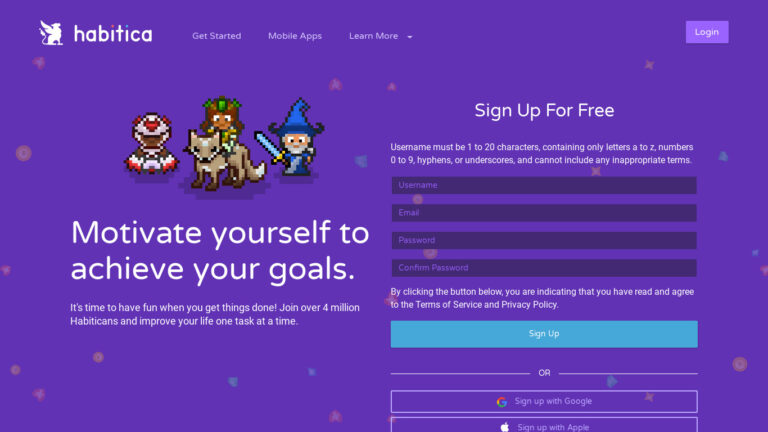Introduction
Duolingo is arguably one of the most recognizable examples of gamification successfully applied in the educational technology (EdTech) sector. With its mission to make language education free, fun, and accessible to everyone, Duolingo has amassed hundreds of millions of users worldwide. Its phenomenal success is inextricably linked to its masterful integration of various game mechanics designed to motivate users, encourage daily practice, and create a compelling learning habit. This case study delves into the specific gamification techniques Duolingo employs and evaluates their effectiveness, particularly concerning user engagement and community interaction.
The Challenge: Making Language Learning Sticky
Learning a new language is notoriously difficult and requires consistent, long-term effort. Traditional methods can often feel tedious, leading to high dropout rates. Duolingo’s primary challenge was to overcome this inertia to transform language learning from a chore into an engaging, almost addictive, daily activity. They needed to keep users motivated, provide clear feedback on progress, and encourage regular interaction with the app.

Gamification Elements in Duolingo
Duolingo employs a multi-layered gamification strategy, making the learning process feel like a game:
- Points (XP – Experience Points):
- Mechanic: Users earn XP for completing lessons, practicing skills, participating in challenges, and fixing mistakes. XP is prominently displayed and accumulated over time.
- Gamification Principle: Points System, Immediate Feedback.
- Impact: Provides instant gratification and a quantifiable measure of effort and progress. Higher XP totals contribute to leaderboard rankings, adding a competitive layer.
- Streaks:
- Mechanic: Users are encouraged to meet a daily XP goal. Maintaining consecutive days of practice builds a “streak,” prominently displayed with a flame icon. Losing a streak often requires “repair” using virtual currency.
- Gamification Principle: Streaks, Loss Aversion, Commitment & Consistency.
- Impact: This is a powerful habit-forming mechanic. The desire to maintain the streak encourages daily login and practice, leveraging the psychological principle of loss aversion (users don’t want to lose their accumulated progress).
- Levels and Progression (Skills & Crowns):
- Mechanic: The learning path is broken down into thematic skills (e.g., “Basics 1,” “Food,” “Past Tense”). Completing lessons within a skill earns progress. Mastering a skill earns “Crowns,” with multiple Crown levels per skill indicating deeper mastery.
- Gamification Principle: Levels, Skill Trees, Mastery Progression, Clear Goals.
- Impact: Provides a structured learning path with clear, achievable milestones. Earning Crowns gives a sense of accomplishment and deeper mastery over specific topics. The visual tree structure shows users how far they’ve come and what’s next.
- Leaderboards (Leagues):
- Mechanic: Users are grouped into weekly leagues (e.g., Bronze, Silver, Gold, Diamond) based on their XP earned. Users compete against others in their league, with top performers being promoted to the next league and bottom performers potentially demoted.
- Gamification Principle: Leaderboards, Competition, Social Comparison, Status.
- Impact: Introduces a strong competitive and social element. Users are motivated to earn more XP to climb the ranks, compare their performance to others, and achieve the status associated with higher leagues. This drives engagement, especially towards the end of the weekly cycle.
- Virtual Currency (Gems/Lingots):
- Mechanic: Users earn Gems (or Lingots on desktop) for achieving milestones like leveling up, finishing skills, or maintaining streaks. This currency can be spent in the in-app shop for items like streak freezes, bonus skills, timer boosts for challenges, or cosmetic outfits for the mascot.
- Gamification Principle: Virtual Economy, Rewards, Customization.
- Impact: Creates an internal reward loop. Users are motivated to earn currency to gain advantages (like streak protection) or personalize their experience, adding another layer of engagement.
- Achievements/Badges:
- Mechanic: Users unlock specific achievements for reaching milestones (e.g., “Photographer” for uploading a profile picture, “Weekend Warrior” for completing a lesson on a weekend, “Sage” for earning a high amount of XP).
- Gamification Principle: Badges, Achievement System, Collection.
- Impact: Provides additional goals and recognition beyond the core learning path, catering to different user motivations (completionists, explorers).
- Hearts (Lives System):
- Mechanic: In many versions, users start with a limited number of “hearts.” Making mistakes in lessons costs a heart. Running out of hearts prevents users from continuing lessons until hearts regenerate over time, are refilled through practice, or are purchased/earned.
- Gamification Principle: Lives System, Scarcity, Stakes.
- Impact: Introduces consequences for errors, encouraging users to pay closer attention. It also acts as a monetization mechanic (paying for refills) or encourages users to engage in specific practice sessions to earn hearts back. This is one of the more controversial elements.
- Visual & Auditory Feedback (“Juice”):
- Mechanic: Duolingo uses bright colors, satisfying sound effects for correct answers, progress bar animations, and encouraging messages from the mascot, Duo the Owl.
- Gamification Principle: Aesthetics, Positive Reinforcement, Feedback Loops.
- Impact: Makes the learning experience more polished, engaging, and rewarding on a moment-to-moment basis.
Impact on Community Building
While Duolingo excels at individual motivation, its community-building aspects primarily revolve around competition and social comparison rather than deep collaboration:
- Leaderboards: The league system is the primary driver of social interaction, albeit competitive. It creates a sense of shared context (“Who is in my league this week?”) and motivates users relative to others’ performance.
- Following Friends: Users can follow friends and compare XP totals, adding a smaller-scale social comparison element.
- (Historical) Forums: Duolingo previously had active forums for discussion, which fostered a stronger collaborative community. However, these were removed, shifting the focus away from user-to-user discussion within the app.
The gamification is less focused on building collaborative communities like Wikipedia’s WikiProjects and more on creating a large, loosely connected network of individuals motivated by personal progress and relative standing.
Overall Score: 4/5
Duolingo gets a 4/5 for its use of gamification in the context of its goals. It’s a masterclass in applying game mechanics to drive individual engagement, habit formation, and retention on a massive scale. The integration of points, streaks, levels, leaderboards, and rewards creates a highly compelling and motivating user experience that successfully makes language learning feel less daunting and more like a game.
It loses a point primarily because its community features, while present (especially leaderboards), are geared more towards competition than deep collaboration or community building in the vein of shared creation or support networks. The removal of forums further reduced the collaborative aspect. Its strength lies overwhelmingly in motivating the individual.
Pros of Duolingo’s Gamification Approach
- High Engagement: Extremely effective at keeping users returning daily (streaks, leagues).
- Clear Progression: Users always know where they are and what to do next (skill tree, crowns).
- Strong Habit Formation: Streaks and daily goals are powerful psychological hooks.
- Motivation through Competition: Leaderboards provide strong extrinsic motivation for many users.
- Accessibility: Breaks down complex learning into bite-sized, game-like tasks.
- Constant Feedback: Users receive immediate reinforcement (XP, sounds, animations).
- Data-Driven: Duolingo constantly A/B tests features to optimize engagement.
Cons of Duolingo’s Gamification Approach
- Focus on Extrinsic Motivation: Heavy reliance on points, streaks, and leagues might overshadow intrinsic motivation (learning for learning’s sake).
- Potential for Superficial Learning: Users might “play the game” (e.g., farm XP on easy lessons) rather than focus on deep understanding.
- Stress and Anxiety: Streaks and league demotions can cause anxiety for some users.
- Notification Fatigue: Frequent reminders (especially from Duo the Owl) can be perceived as annoying or pushy.
- Limited Deep Community: Focus is more on individual progress and competition than collaboration or mutual support.
- Hearts System Controversy: Can feel punitive or like a barrier forcing monetization/grinding.
Conclusion
Duolingo stands as a benchmark for applying gamification in EdTech. Its sophisticated system of points, streaks, levels, leaderboards, and rewards has successfully transformed language learning into an engaging daily habit for millions. While the focus is heavily skewed towards individual motivation and competition rather than deep community building, its effectiveness in user acquisition, engagement, and retention is undeniable. Duolingo demonstrates how well-designed gamification can make challenging tasks accessible and compelling on an unprecedented scale.
Estimated reading time: 7 minutes



